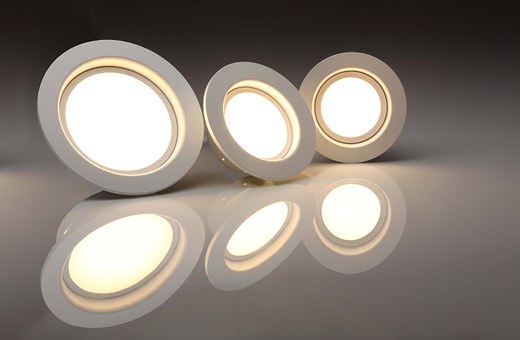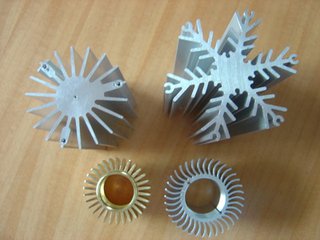A few days ago, there were abnormal high temperatures in all parts of the country. Some female netizens said, "My mother and I fell into the water at the same time. You must save your mother first, let me stay in the water for a while!"; some netizens said: "Going out five Minutes, sweat for two hours!"... The high temperature weather makes people call "can't stand"!

Continuously at high temperatures, the body is prone to a series of adverse reactions:
1. The impact on the circulatory system. During high-temperature operation, the skin's blood vessels dilate, and a large amount of sweat causes the blood to concentrate, resulting in increased cardiac activity, rapid heartbeat, elevated blood pressure, and increased cardiovascular burden.
2. The impact on the digestive system. High temperature has an inhibitory effect on salivation. Reduce the secretion of gastric juice, slow down the gastric peristalsis, resulting in loss of appetite; a large amount of sweating and loss of chloride, so that the acidity of gastric juice is reduced, easily lead to indigestion. In addition, high temperatures can slow the movement of the small intestine and form other gastrointestinal diseases.
3. The impact on the urinary system. At high temperatures, most of the body fluids of the human body are discharged by the sweat glands, and the amount of water and salt discharged through the kidneys is greatly reduced, so that the urine is concentrated and the burden on the kidneys is aggravated.
4. The impact on the nervous system. Under the action of high temperature and heat radiation, the working ability of the muscle, the accuracy and coordination of the movement, the speed of the brain reaction and the attention decreased.
High temperature will have such a big impact on the human body, then What about the light source?
It is well known that the electrical energy added by the LED under working conditions is not completely converted into light energy, but a part is converted into heat energy. As the fourth generation of light source, LED has great development prospects due to its advantages of energy saving, environmental protection and long life. However, the LED is extremely sensitive to temperature, and the junction temperature rise will affect the LED life, light efficiency, light color (wavelength), color temperature, light shape (light distribution), and forward voltage, maximum injection current, luminosity, color, and electrical parameters. And reliability, etc.
First, too high a temperature can cause permanent damage to the LED. When the LED temperature exceeds the carrying temperature of the chip, the luminous efficiency of the LED will be rapidly reduced, resulting in significant light decay and damage. In addition, LEDs are mostly encapsulated in transparent epoxy. If the junction temperature exceeds the solid phase transition temperature (usually 125 ° C), the packaging material will change to a rubbery state and the thermal expansion coefficient will rise sharply, resulting in LED open circuit and failure.

Second, an increase in temperature will shorten the life of the LED. The life of an LED is manifested by its light decay, which means that the time is long and the brightness is getting lower and lower until it is finally extinguished. It is usually defined that the LED light flux is attenuated by 30% of its life. The defects existing in the material will rapidly proliferate and multiply at higher temperatures until they invade the illuminating area, forming a large number of non-radiative recombination centers, which seriously reduce the luminous efficiency of the LED. In addition, under high temperature conditions, micro-defects in the material and fast-expanding impurities from the interface and the electric plate are also introduced into the light-emitting region, forming a large number of deep levels, which also accelerates the light decay of the LED device. At the same time, at high temperature, the transparent epoxy resin will be denatured and yellow, which will affect its light transmission performance. The higher the working temperature, the faster the process will proceed, which is another major cause of LED light decay. In addition, the light decay of the phosphor is also a major cause of the LED light decay, because the phosphor's attenuation at high temperatures is very serious.
The heat problem is in The development of the main obstacles for the use of lighting objects, so the use of various means to reduce the temperature of the LED has become a problem discussed by major manufacturers. Since the heat dissipation of LEDs is now more and more important to people, various types Also applied to LED lighting technology!
Since the LED light source itself has no radiation heat dissipation function, the heat dissipation path of the LED lighting fixture can only derive heat through a heat sink closely combined with the LED lamp bead. Any radiator, in addition to being able to quickly transfer heat from the heat source to the surface of the radiator, the most important thing is to rely on convection and radiation to dissipate heat into the air. Thermal conduction only solves the heat transfer path, and thermal convection is the main function of the heat sink. The heat dissipation performance is mainly determined by the heat dissipation area, shape, and natural convection strength. Thermal radiation is only an auxiliary function.
Radiator, as a common way of cooling LED lamps, its shape and material have undergone repeated changes. Currently, on the market There are several types of equipment: die-cast aluminum radiator, extruded aluminum radiator, stamped aluminum radiator, plastic aluminum radiator and high thermal conductivity plastic radiator.

The production cost of the die-cast aluminum radiator is controllable, the heat-dissipating fin cannot be made thin, and it is difficult to maximize the heat-dissipating area. The heat dissipating fins of the extruded aluminum radiator can be made a lot of thin, and the heat dissipating area is maximized. When the cooling fins work, the air convection heat is automatically formed, and the heat dissipating effect is better, but the processing cost is higher. The stamped aluminum radiator is stamped and pulled up by the punching machine and the die for the steel and aluminum alloy, so that it becomes a cup-type radiator. The inner and outer periphery of the stamped heat sink is smooth, and the heat-dissipating area is limited due to the wingless. The heat-conducting plastic used in the plastic-coated aluminum radiator is a thermoplastic material. The fluidity, density, toughness and strength of the material are easy to be injection-molded. It has good resistance to cold and heat shock cycles, excellent insulation performance, and all-aluminum radiator. Compared with the processing cost is low, the processing cycle is short, the processing temperature is low; the finished product is not easy to be broken; the customer-supplied injection molding machine can carry out the differential shape design and production of the lamp, and the plastic-coated aluminum radiator has good insulation performance and is easy to pass the safety regulation. High thermal conductivity plastic radiator, high thermal conductivity plastic radiator An all-plastic radiator, its thermal conductivity is several times higher than ordinary plastic, with excellent heat conduction and heat radiation capability; it can be applied to new insulation of various power lamps. Heat sink material.
Speaking of the radiator, of course, I have to mention overclocking three. Founded in 2005, Shenzhen Overclocking Technology Co., Ltd. is a leading national high-tech enterprise integrating R&D, production and sales of radiators. In 2011, overclocking three marching into the LED heat dissipation, with advanced cooling technology, quickly became the leader in LED heat dissipation.
On March 28, the overclocking three IPO application was approved by the China Securities Regulatory Commission's GEM Issue Review Committee and successfully landed on the capital market on May 3. From 2014 to 2016, overclocking three realized operating income of 354.425 million yuan, 3357.596 million yuan and 3.4392.49 million yuan respectively. The operating income remained basically stable; the net profit attributable to shareholders of listed companies was 44.419 million yuan. 4,773,500 yuan and 5,281,100 yuan, the net profit increased relatively. From January to March 2017, overclocking three operating income was 71,062,719.84 yuan, an increase of 7.53% over the same period of 2016; net profit attributable to issuer shareholders was 8,417,058.31 yuan, compared with 2016. Increased by 9.30%.
In recent years, with the wider application range of LED lighting, the LED lighting industry has developed rapidly, and the industrial division of labor has also made great progress. LED luminaire manufacturers with channel advantages purchase heat dissipation components, LED light sources, and drive power supplies from suppliers, and then assemble them into finished lamps to sell to their downstream customers. The growth in customer demand such as luminaire manufacturers is driving the continued development of the LED lighting and cooling components industry.
LED lighting applications and cooling technology requirements are different, making the LED lighting and cooling components industry show different competitive characteristics.
Low-power LED lighting products have low power consumption and low heat generation, which mainly depends on the heat dissipation of the lamp housing. There are a large number of lighting or hardware processing enterprises engaged in the processing of small-power LED lighting products, and the production is relatively scattered, and the number of enterprises with large-scale supply capacity is small. The rapid increase in the market penetration rate of low-power LED lighting products has also attracted a large number of home-based companies to infiltrate into the field of low-power LED lighting, which has intensified competition in this industry. At present, most enterprises in the low-power LED lighting and heat-dissipating component industry are not high in technology and relatively backward in manufacturing process, and they do not pay much attention to the heat dissipation design of lamps. The quality of products is not high. These enterprises are mainly involved in the competition of low-end products.
High-power LED lighting products are rich in specifications, mainly as energy-saving alternatives to traditional metal halide lamps, high-pressure sodium lamps and other lighting sources, and are currently in the market introduction period. It is expected that with the advancement and popularization of heat dissipation technology and the outbreak of high-power LED lighting market, enterprises entering the field of high-power LED lighting and cooling will increase, and the competition will become increasingly fierce.
High definition LED displays or HD led screen also called Small pixel pitch led display screens represents the latest and
top technology of LED display industrial, they are widely used in high-end
conference
rooms, TV studios, the government mansion, etc. With 400mm*300mm cabinet
size, it is very easy to get 16:9 or 4:3 display ratio. As the 400*300mm cabinet is light weight and has high precision in cabinet size.
HD LED Video Wall ,HD LED Video Wall, indoor LED Display, Indoor LED screen
Shenzhen Priva Tech Co., Ltd. , https://www.privaled.com